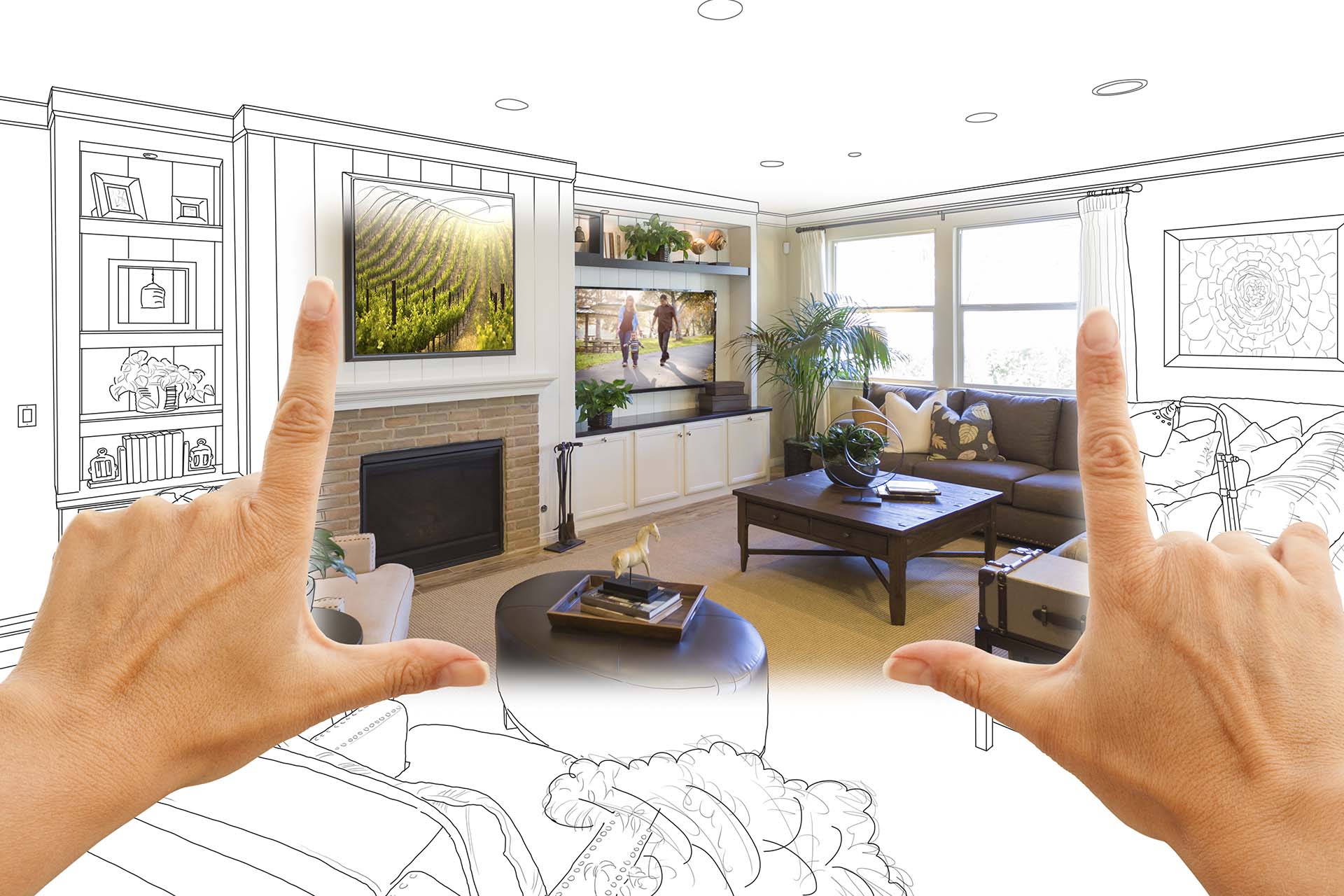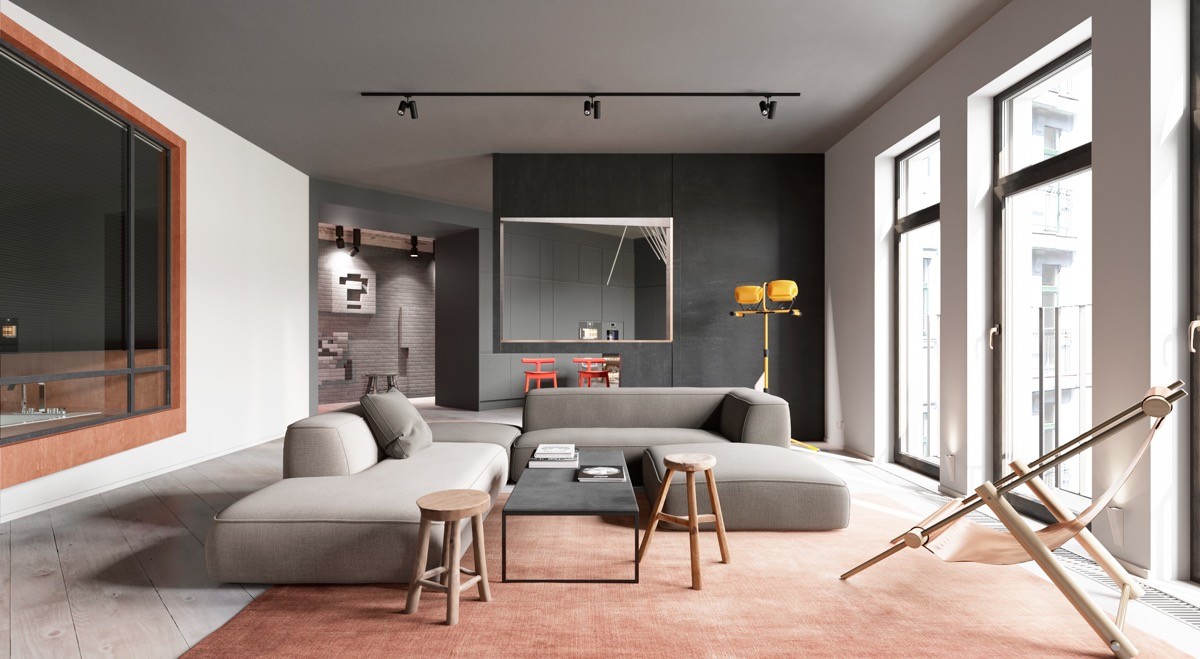Find the Best Interior Design Services Near You
Find the Best Interior Design Services Near You Embarking on a home makeover can feel both exhilarating and overwhelming. With so many options at your fingertips, how do you pinpoint the crème de la crème of interior design services in your vicinity? Whether you crave a chic minimalist revamp, a lavish maximalist makeover, or a tailored fusion of eclectic elements, this guide will equip you with the tools, strategies, and insider know-how to discover the perfect professionals for your project. Expect insights on vetting portfolios, decoding pricing structures, leveraging technology, and forging fruitful collaborations. Ready to transform your abode into a sanctuary of style and function? Let’s dive in!

Define Your Vision and Scope
Before engaging any design firm, crystallize what you truly desire:
- Style Archetype: Do you gravitate toward mid-century modern, Scandinavian simplicity, industrial loft, or bohemian chic?
- Project Scale: Is your endeavor a single-room facelift, an open-plan overhaul, or a ground-up renovation?
- Budget Bracket: Establish clear financial parameters—consider design fees, procurement costs, and contingency reserves.
- Timeline Requirements: Urgent holiday hosting? A leisurely summer project? Align expectations from the outset.
Jot down inspiration sources—Pinterest boards, magazine clippings, or snapshots from boutique hotels. This groundwork streamlines conversations with potential interior design services, ensuring they grasp your aesthetic lexicon and logistical constraints.
Research Local Firms and Freelancers
Proximity matters when collaborating closely. Here’s how to unearth local talent:
- Online Directories and Platforms: Websites like Houzz, HomeAdvisor, and Thumbtack curate vetted professionals with reviews, project galleries, and service descriptions.
- Social Media Scouting: Instagram and Facebook can reveal designers’ portfolios in real time; search hashtags like #YourCityInteriors or #YourCityDesignStudio.
- Local Publications: Community magazines and design-focused newsletters often spotlight rising stars and established studios.
- Word-of-Mouth Referrals: Ask neighbors, friends, or colleagues whose homes you admire. Personal endorsements provide invaluable insights into reliability and rapport.
Compile a shortlist of five to eight candidates. Then—crucially—inspect their digital showrooms: are their past projects aligned with your vision? Do they exhibit versatility or a signature style? This preliminary triage saves time and ensures a harmonious partnership.
Evaluate Portfolios with a Discerning Eye
A stunning website can dazzle, but peer behind the curtain:
- Cohesiveness vs. Versatility: Some firms shine in a particular niche; others adapt to varying aesthetics. Which approach suits your needs?
- Attention to Detail: Notice how they handle trim work, fixtures, and furniture placement. Flawless millwork and harmonious proportions signal a meticulous eye.
- Material Selection: Do they favor eco-friendly textiles, bespoke lighting, or artisanal furnishings? Your values should dovetail with their procurement philosophy.
- Spatial Flow: Assess how they balance open areas with cozy nooks. Innovative furniture arrangements can transform circulation and perceived volume.
Annotate portfolio images with observations—what excites you, what gives pause, and any clever solutions you’d like to emulate. This annotated dossier becomes the cornerstone of your interview process.
Decode Pricing Structures
Design fees vary widely, often reflecting experience, prestige, and service scope. Common models include:
- Hourly Rates: Transparent but potentially unpredictable. Ensure you receive regular time reports.
- Flat Fees: A lump-sum for defined deliverables; ideal for well-scoped projects.
- Percentage of Project Cost: Typically 10–25% of total budget, incentivizing designers to manage procurement economically.
- Phased Billing: Milestones-based payments tied to schematic design, procurement, and installation.
Request detailed proposals that delineate every line item: design development, sourcing, project management, and installation. Hidden charges—shipping, restocking fees, or change-order surcharges—can derail budgets. Negotiate clarity and, if possible, cap escalations at a defined percentage.
Schedule Consultations and Ask the Right Questions
A one-hour discovery call or in-home consult reveals far more than email exchanges. Consider these pivotal questions:
- What’s your design philosophy, and how do you tailor it to each client?
- Can you describe a project where you exceeded client expectations—or one where you encountered significant challenges? How did you resolve them?
- How do you manage subcontractors, timelines, and on-site coordination?
- What’s your process for selecting materials and furnishings? Do you have trade partnerships or preferred vendors?
- How will we communicate? What project-management tools or platforms do you employ?
- Can you work within my budget and timeline constraints?
Observe soft skills: active listening, enthusiasm, and clarity. A seasoned professional will articulate a structured process, anticipate potential obstacles, and offer provisional solutions.
Verify Credentials and References
Beyond aesthetics, reliability is paramount.
- Licenses and Certifications: While not legally mandated in every jurisdiction, credentials from bodies like the American Society of Interior Designers (ASID) or the Interior Design Society (IDS) reflect commitment to best practices.
- Insurance Coverage: Ensure they carry general liability and professional indemnity insurance to safeguard against damages or design errors.
- Client References: Request at least two recent referrals. Ask about punctuality, problem-solving, and whether the final outcome aligned with initial promises.
A reputable firm welcomes scrutiny; reticence or evasiveness signals caution.
Leverage Technology for Virtual Collaboration
Even local designers harness digital tools to streamline workflows:
- 3D Renderings and Virtual Reality: These immersive previews eliminate guesswork and accelerate decision-making.
- Mood Boards and Digital Concept Books: Platforms like Milanote or Adobe XD facilitate real-time feedback on palettes, materials, and layouts.
- Project Management Software: Trello, Asana, or proprietary portals ensure transparency on timelines, approvals, and deliverables.
- E-Signing and Cloud Storage: Expedite contracts and centralized document repositories to minimize paperwork bottlenecks.
Embrace these innovations to maintain momentum, especially if your life schedule or commute demands flexibility.
Assess Sustainability and Ethical Practices
For eco-conscious homeowners, “green” extends beyond potted plants:
- Certifications: Look for designers versed in LEED, WELL, or Living Building Challenge principles.
- Material Sourcing: Ask about FSC-certified woods, low-VOC paints, and upcycled or vintage furnishings.
- Energy Efficiency: Inquire how lighting plans and HVAC considerations can enhance comfort while reducing utility bills.
- Local Artisans: Supporting regional craftspeople reduces carbon footprints and imbues your space with unique character.
Prioritizing sustainability often yields long-term savings and a healthier living environment—both aesthetic and environmental victories.
Understand Contractual Terms and Scope of Work
A comprehensive contract protects both parties:
- Scope Definition: Detailed descriptions of each phase—conceptual design, schematic drawings, procurement, installation.
- Deliverables and Deadlines: Milestone dates for presentations, purchase orders, and site walkthroughs.
- Payment Schedule: Explicit due dates, accepted payment methods, and Late-Payment Penalties (LPPs).
- Change-Order Protocol: How revisions are requested, approved, and billed.
- Termination Clause: Conditions under which the agreement can be dissolved, and any associated fees.
- Warranties and After-Care: Guarantees on workmanship and timetables for addressing post-installation issues.
Engage your own legal counsel to review terms if the investment is substantial. Clarity now averts conflict later.
Explore Package Deals and Designer Showrooms
Some studios offer all-inclusive packages:
- Full-Service Turnkey: From initial concept to final installation, they handle every detail.
- E-Design Services: Affordable online-only consultations, mood boards, and shopping lists—ideal for smaller budgets.
- A La Carte Offerings: À la carte options for color consultations, space planning, or procurement-only engagements.
Visit showrooms to experience fabrics, finishes, and furnishings firsthand. Touch and see—digital swatches can only convey so much. Many showrooms host design events and trunk shows where you can meet vendors and snag exclusive trade discounts.
Maximize Value with Trade Discounts
Professional interior design services often grant access to trade-only pricing:
- Furniture and Fabrics: Premium brands like Kravet, Holly Hunt, and Dedar extend designer discounts.
- Lighting and Fixtures: Ellington, Visual Comfort, and Vaughan offer trade programs for licensed designers.
- Custom Millwork and Cabinetry: Local workshops may provide preferential rates through established relationships.
Clarify discount structures upfront and confirm whether savings are passed through. Even a nominal percentage can translate to substantial savings on high-ticket items.
Collaborate on a Detailed Design Brief
Once you’ve selected a partner, co-create a design brief that encapsulates:
- Project Objectives: Functional requirements, occupancy loads, and workflow considerations.
- Aesthetic Parameters: Color palettes, material hierarchies, and inspirational imagery.
- Technical Specifications: Lighting levels (in lux), power outlets, HVAC adaptability, and acoustics.
- Lifestyle Factors: Pet-friendly fabrics, kid-safe finishes, or aging-in-place features.
This blueprint aligns expectations and serves as the North Star for all subsequent decisions, ensuring cohesion across every facet of your home’s metamorphosis.
Monitor Progress and Provide Timely Feedback
A collaborative ethos thrives on open communication:
- Regular Check-Ins: Weekly or biweekly status meetings to review designs, budgets, and schedules.
- Prompt Approvals: Delays in sign-offs reverberate through ordering lead times and installation calendars.
- Photographic Documentation: Before-and-after shots provide visual records and help troubleshoot any deviations.
- Issue Resolution Protocol: Establish a single point of contact for change requests or emergent concerns.
Proactivity on both sides ensures the project remains on track, on budget, and aligned with your vision.
Plan for Installation and Staging
The crescendo of your collaboration is the installation phase:
- Site Preparation: Clear pathways, protect existing finishes, and coordinate with contractors (electricians, plumbers, painters).
- Delivery Coordination: Schedule furniture and décor arrivals in logical sequences to prevent clutter.
- On-Site Adjustments: Your designer should oversee placement, tweak alignments, and ensure symmetry.
- Styling and Accessorizing: Cushions, throws, artworks, and accent pieces bring the design to life.
A well-orchestrated installation culminates in a reveal that feels both seamless and spectacular—a testament to thorough planning and expert execution.
Celebrate and Maintain Your New Space
After the final flourish, take a moment to revel in your transformed environment. Host a small gathering or a quiet evening of reflection. To preserve the integrity of your design:
- Follow Care Guidelines: Dust wooden surfaces, vacuum rugs, and clean upholstery per manufacturer instructions.
- Rotate Accessories: Refresh artwork or cushions seasonally to maintain novelty.
- Schedule Periodic Touch-Ups: Revisit paint touch-ups or hardware adjustments as needed.
Your investment in interior design services extends beyond aesthetics—it’s about crafting a living space that nurtures well-being and inspires daily joy.
Conclusion
Unearthing the optimal interior design services near you requires a blend of introspective visioning, diligent research, and strategic collaboration. By defining your aesthetic aspirations, vetting portfolios, decoding pricing, and leveraging technology, you set the stage for a rewarding partnership. Seal the process with a crystal-clear contract, proactive feedback, and meticulous installation oversight. The result? A bespoke sanctuary that mirrors your lifestyle, elevates your mood, and stands as a testament to thoughtful design. Now, armed with these expert strategies, step out and secure the perfect design ally to bring your dream space to vibrant life!





